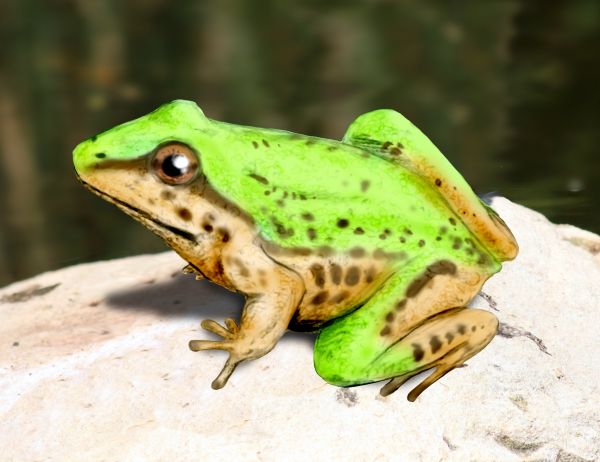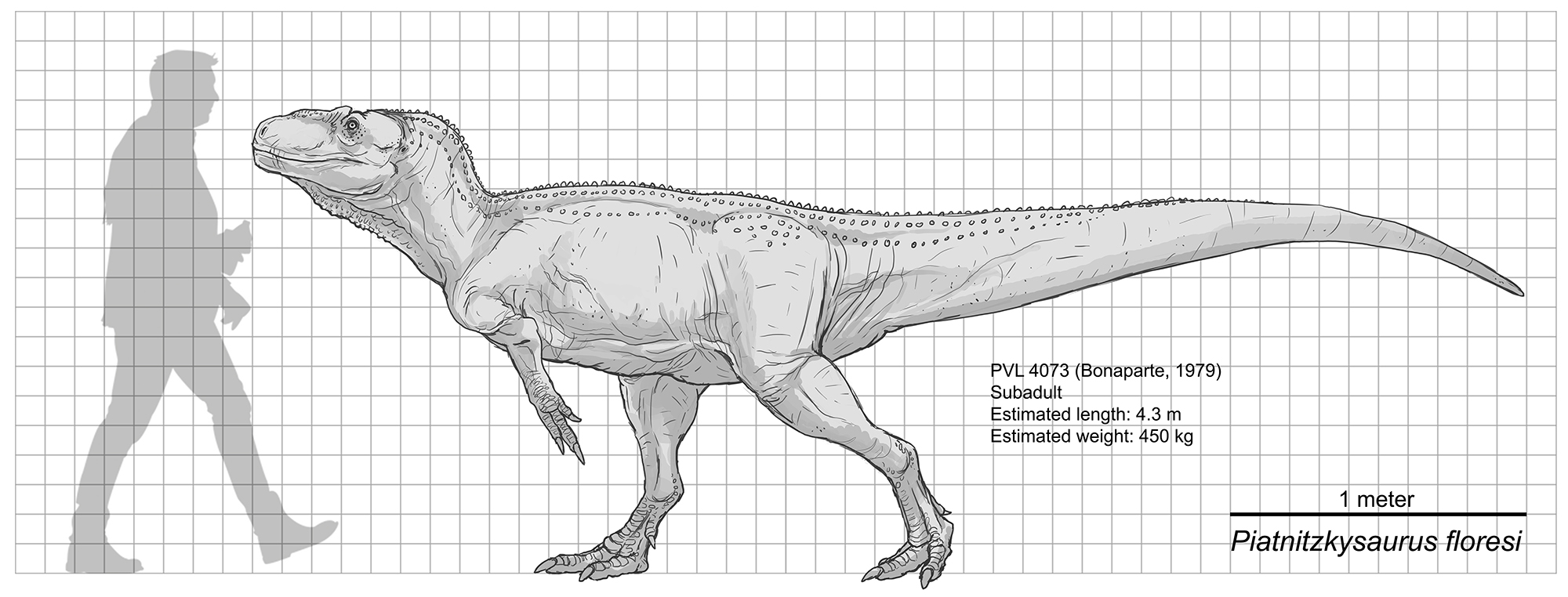|
Patagosaurus
''Patagosaurus'' (meaning "Patagonia lizard") is an extinct genus of eusauropod dinosaur from the Middle-Late Toarcian of Patagonia, Argentina. It was first found in deposits of the Cañadón Asfalto Formation, which date to around 179 to 177 million years ago. Although originally twelve specimens were assigned to the taxon, at least one of them may belong to a different genus. ''Patagosaurus'' probably lived alongside genera as '' Piatnitzkysaurus'', '' Condorraptor'' and ''Volkheimeria''. Since ''Patagosaurus'' is known from many specimens, including at least one juvenile, its anatomy and growth are fairly well understood. Both ages exhibit the typical features of a sauropod, a long neck, small head, a long tail and being quadrupedal. The juvenile exhibits features different from the adult in regions like the mandible, pectoral girdle, pelvis and hindlimb, although overall their anatomy is quite similar. The many known specimens help fill in gaps in the anatomy of the gen ... [...More Info...] [...Related Items...] OR: [Wikipedia] [Google] [Baidu] |
Eusauropod
Eusauropoda (meaning "true sauropods") is a derived clade of sauropod dinosaurs. Eusauropods represent the node-based group that includes all descendant sauropods starting with the basal eusauropods of '' Shunosaurus'', and possibly '' Barapasaurus'', and ''Amygdalodon'', but excluding ''Vulcanodon'' and '' Rhoetosaurus''. The Eusauropoda was coined in 1995 by Paul Upchurch to create a monophyletic new taxonomic group that would include all sauropods, except for the vulcanodontids. Eusauropoda are herbivorous, quadrupedal, and have long necks. They have been found in South America, Europe, North America, Asia, Australia, and Africa. The temporal range of Eusauropoda ranges from the early Jurassic to the Latest Cretaceous periods. The most basal forms of eusauropods are not well known and because the cranial material for the ''Vulcanodon'' is not available, and the distribution of some of these shared derived traits that distinguish Eusauropoda is still completely clear. Descripti ... [...More Info...] [...Related Items...] OR: [Wikipedia] [Google] [Baidu] |
Volkheimeria
''Volkheimeria'' is an extinct genus of sauropod dinosaurs that lived in what is now Argentina during the Early Jurassic, 178–179 million years ago. Its type and only species is ''Volkheimeria chubutensis''. Discovery and naming The only known specimen of ''Volkheimeria'' was discovered at the site of Cerro Cóndor Sur, roughly a kilometer west of the village of Cerro Cóndor in Chubut Province, Argentina. In 1979, José Bonaparte described it as representing a new genus and species, ''Volkheimeria chubutensis'', alongside two other species discovered in the same strata, ''Piatnitzkysaurus floresi'' and ''Patagosaurus fariasi''. The genus name ''Volkheimeria'' honors the Argentinean paleontologist Wolfgang Volkheimer. Fossil record Only a single specimen of ''Volkheimeria chubutensis'' is known: the holotype PVL 4077, a partial skeleton from the Cañadón Asfalto Formation of Argentina. This specimen consists of a partial cervical vertebra, two complete and two partial d ... [...More Info...] [...Related Items...] OR: [Wikipedia] [Google] [Baidu] |
Cañadón Asfalto Formation
The Cañadón Asfalto Formation is a Lower Jurassic to Late Jurassic geologic formation, from the Jurassic period of the Mesozoic Era. Its age is controversial, uranium-lead dating of the volcanic tuff beds having given various different ages. A Recent work suggested that the base of the formation was formed around 171 Ma, during the upper Aalenian, while the main age for the Lower Las Chacritas Member being around 168 Ma, during the Bajocian, Bathonian and Callovian While the overlying Puesto Almada Member seems to be around 158 ma, or Oxfordian age, that changed thanks to the discovery of zircons near the location of discovery of ''Bagualia'', allowing a precise age of Las Charcitas Member as Middle-Late Toarcian, 178-179 million years, and a later study constrained the age of the formation as Middle Toarcian-Lower Bajocian, being contemporaneous to the Chon Aike volcanic activity, being a local equivalent to Antarctica's Mawson Formation. It is located in the Cañ ... [...More Info...] [...Related Items...] OR: [Wikipedia] [Google] [Baidu] |
1979 In Paleontology
Paleontology Paleontology (), also spelled palaeontology or palæontology, is the scientific study of life that existed prior to, and sometimes including, the start of the Holocene epoch (roughly 11,700 years before present). It includes the study of fossi ... Paleontology 9 ... [...More Info...] [...Related Items...] OR: [Wikipedia] [Google] [Baidu] |
Piatnitzkysaurus
''Piatnitzkysaurus'' ( meaning "Piatnitzky's lizard") is a genus of megalosauroid theropod dinosaur that lived approximately 179 to 177 million years ago during the lower part of the Jurassic Period in what is now Argentina. ''Piatnitzkysaurus'' was a moderately large, lightly built, bipedal, ground-dwelling carnivore that could grow up to long. Discovery and naming The holotype specimen of ''Piatnitzkysaurus'', PVL 4073, was collected during expeditions in 1977, 1982, and 1983 at the Cañadón Asfalto Formation in sediments that were deposited during the Middle-Late Toarcian stage of the Jurassic period, approximately 179 to 177 million years ago.Bonaparte, J. F. (1979)Dinosaurs: a Jurassic assemblage from Patagonia.''Science'', ''205''(4413), 1377-1379. The specimen was very complete and is one of the best known from a Megalosaur, including a partial skull and partial anterior postcranial skeleton of a subadult individual preserved in semi-articulation.Bonaparte, J. F., ... [...More Info...] [...Related Items...] OR: [Wikipedia] [Google] [Baidu] |
Museo Argentino De Ciencias Naturales
The Bernardino Rivadavia Natural Sciences Argentine Museum ( es, Museo Argentino de Ciencias Naturales Bernardino Rivadavia) is a public museum located in the Caballito section of Buenos Aires, Argentina. History and overview The museum owes its existence to a proposal made by Bernardino Rivadavia before the First Triumvirate of the United Provinces of the Río de la Plata in 1812. The ongoing struggle for Independence from the Spanish colonial period stalled Rivadavia's project, however, until 1823, when he promoted construction of a building for the museum as a member of Governor Martín Rodríguez's cabinet. The original museum opened in 1826 and was housed downtown in a loft inside the Santo Domingo Convent, which had been made available to host Rivadavia after his expulsion of the Dominican order from Buenos Aires. Rivadavia closely oversaw the construction of the institution, the first of its kind in South America, and appointed Italian Argentine botanist Carlos Ferraris ... [...More Info...] [...Related Items...] OR: [Wikipedia] [Google] [Baidu] |
Cetiosaurus
''Cetiosaurus'' () meaning 'whale lizard', from the Greek '/ meaning 'sea monster' (later, 'whale') and '/ meaning 'lizard', is a genus of herbivorous sauropod dinosaur from the Middle Jurassic Period, living about 168 million years ago in what is now Europe. ''Cetiosaurus'' was in 1842 the first sauropod from which bones were described and is the most complete sauropod found in England. It was so named because its describer, Sir Richard Owen, supposed it was a marine creature, initially an extremely large crocodile, and did not recognise it for a land-dwelling dinosaur. Because of the early description many species would be named in the genus, eventually eighteen of them. Most of these have now been placed in other genera or are understood to be dubious names, based on poor fossil material. The last is true also of the original type species, ''Cetiosaurus medius'', and so ''C. oxoniensis'' was officially made the new type species in 2014. ''C. oxoniensis'' is based on three mo ... [...More Info...] [...Related Items...] OR: [Wikipedia] [Google] [Baidu] |
Forelimb
A forelimb or front limb is one of the paired articulated appendages (limbs) attached on the cranial (anterior) end of a terrestrial tetrapod vertebrate's torso. With reference to quadrupeds, the term foreleg or front leg is often used instead. In bipedal animals with an upright posture (e.g. humans and some primates), the term upper limb is often used. A forelimb is not to be confused with a forearm, which is a distal portion of the human upper limb between the elbow and the wrist. All vertebrate forelimbs are homologous, meaning that they all evolved from the same structures. For example, the flipper of a turtle or of a dolphin, the arm of a human, the foreleg of a horse, and the wings of both bats and birds are ultimately homologous, despite the large differences between them. Specific uses of the forelimbs may be analogous if they evolved from different sub-structures of the forelimb, such as the flippers of turtles and dolphins, and the wings of birds and bats. Evolut ... [...More Info...] [...Related Items...] OR: [Wikipedia] [Google] [Baidu] |
Ischium
The ischium () forms the lower and back region of the hip bone (''os coxae''). Situated below the and behind the pubis, it is one of three regions whose fusion creates the coxal bone. The superior portion of this region forms approximately one-third of the |
Toarcian
The Toarcian is, in the ICS' geologic timescale, an age and stage in the Early or Lower Jurassic. It spans the time between 182.7 Ma (million years ago) and 174.1 Ma. It follows the Pliensbachian and is followed by the Aalenian. The Toarcian Age began with the Toarcian turnover, the extinction event that sets its fossil faunas apart from the previous Pliensbachian age. It is believed to have ended with a global cooling event known as the Comptum Cooling Event, although whether it represented a worldwide event is controversial. Stratigraphic definitions The Toarcian takes its name from the city of Thouars, just south of Saumur in the Loire Valley of France. The stage was introduced by French palaeontologist Alcide d'Orbigny in 1842, after examining rock strata of this age in a quarry near Thouars. In Europe this period is represented by the upper part of the Lias. The base of the Toarcian is defined as the place in the stratigraphic record where the ammonite genu ... [...More Info...] [...Related Items...] OR: [Wikipedia] [Google] [Baidu] |
Basal (phylogenetics)
In phylogenetics, basal is the direction of the ''base'' (or root) of a rooted phylogenetic tree or cladogram. The term may be more strictly applied only to nodes adjacent to the root, or more loosely applied to nodes regarded as being close to the root. Note that extant taxa that lie on branches connecting directly to the root are not more closely related to the root than any other extant taxa. While there must always be two or more equally "basal" clades sprouting from the root of every cladogram, those clades may differ widely in taxonomic rank, species diversity, or both. If ''C'' is a basal clade within ''D'' that has the lowest rank of all basal clades within ''D'', ''C'' may be described as ''the'' basal taxon of that rank within ''D''. The concept of a 'key innovation' implies some degree of correlation between evolutionary innovation and diversification. However, such a correlation does not make a given case predicable, so ancestral characters should not be imputed ... [...More Info...] [...Related Items...] OR: [Wikipedia] [Google] [Baidu] |
Pubis Bone
In vertebrates, the pubic region ( la, pubis) is the most forward-facing (ventral and anterior) of the three main regions making up the coxal bone. The left and right pubic regions are each made up of three sections, a superior ramus, inferior ramus, and a body. Structure The pubic region is made up of a ''body'', ''superior ramus'', and ''inferior ramus'' (). The left and right coxal bones join at the pubic symphysis. It is covered by a layer of fat, which is covered by the mons pubis. The pubis is the lower limit of the suprapubic region. In the female, the pubic region is anterior to the urethral sponge. Body The body forms the wide, strong, middle and flat part of the pubic region. The bodies of the left and right pubic regions join at the pubic symphysis. The rough upper edge is the pubic crest, ending laterally in the pubic tubercle. This tubercle, found roughly 3 cm from the pubic symphysis, is a distinctive feature on the lower part of the abdominal wall; importan ... [...More Info...] [...Related Items...] OR: [Wikipedia] [Google] [Baidu] |







